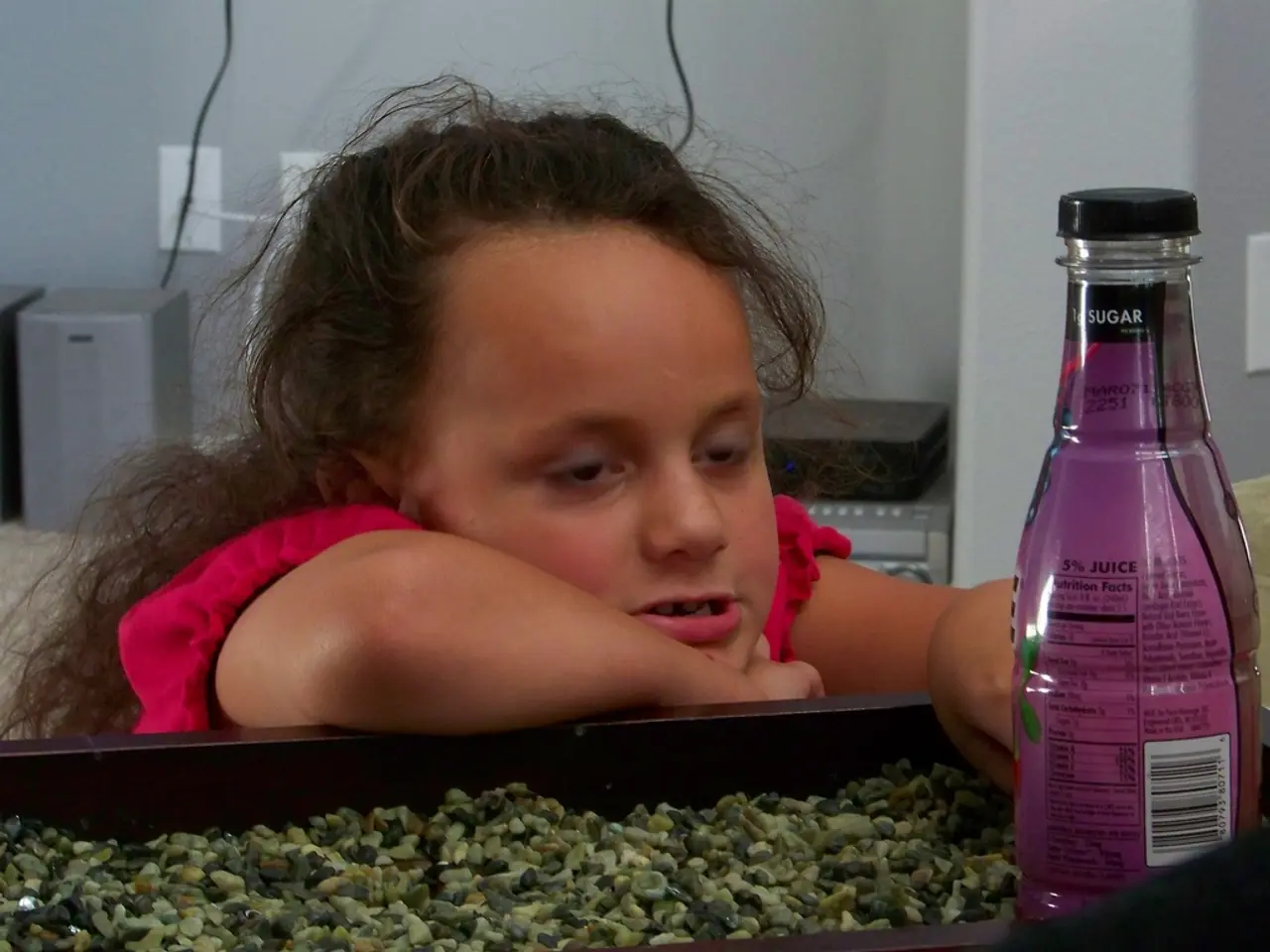Toddler with Mysterious Rash: Understanding Causes, Varieties, and Solutions Without Respiratory Symptoms
In the world of toddlers, viral rashes can sometimes make an unexpected appearance, often as a result of infections such as Roseola, Hand, Foot, and Mouth Disease (HFMD), or Molluscum Contagiosum. This article aims to shed light on these common viral rashes, their symptoms, causes, and treatment options.
### Viral Exanthems
One of the most common viral rashes is known as viral exanthems. Characterised by flat pink or red spots with small bumps, these rashes generally do not itch. They are caused by viruses such as the flu or common cold viruses, and treatment is typically supportive, focusing on relieving symptoms. Antihistamines or moisturizers may be used if itching is present.
### Molluscum Contagiosum
Another viral rash, Molluscum Contagiosum, presents as small, pearly, or flesh-coloured bumps. While it does not usually cause fever, it can spread through skin-to-skin contact or contaminated objects. In many cases, no treatment is needed, as it resolves on its own. However, removal of the lesions by a healthcare professional can be an option.
### HFMD Without Fever
While HFMD typically includes fever, there are instances where the rash may appear without significant fever. These cases can be challenging, as the rash may be the only symptom. Painful blisters on hands, feet, and the mouth characterise HFMD without fever. The cause is usually coxsackievirus A or enterovirus 71. Treatment focuses on symptom relief, with keeping the child hydrated and using topical pain relievers for blisters being helpful.
### Additional Considerations
In cases where fever is absent, it's crucial to monitor the rash for signs of worsening or spreading and consult a healthcare professional if concerned. Avoiding close contact with others when a rash is present can help prevent the spread of viral infections.
### Rubella and Roseola
Rubella, also known as German measles, is a contagious viral infection that affects children and adults, causing a red rash as the first noticeable indication. Symptoms may include a headache, redness or swelling of the whites of the eyes, physical discomfort, a cough, a runny nose, swollen lymph nodes, low grade fever, and there is no cure for rubella. Treatment involves bed rest and OTC medications to alleviate headaches and fever.
Roseola, also known as sixth disease, is caused by human herpesvirus 6 (HHV-6) and is common in infants and toddlers under 2 years of age. It causes a high fever of about 40°C for 3-5 days, followed by a distinctive rash on the torso that may spread to the arms, neck, or face. There is no specific treatment for roseola, but over-the-counter pain relievers may help reduce a high fever.
### Fifth Disease
Fifth disease, caused by a parvovirus B19 infection, is more common in children than adults. Symptoms may include a headache, fatigue, a runny nose or congestion, painful or swollen joints, low grade fever, and a rash that results in a bright red rash on the cheeks, arms, legs, back, chest, and buttocks. OTC anti-inflammatory drugs may help relieve joint pain and swelling in fifth disease.
When toddlers develop a skin rash alongside severe symptoms such as high fever, vomiting, severe or intense headache, refusal to eat or drink, or if an infant or toddler under 6 months of age develops a new rash, parents or caregivers should consult a healthcare professional.
In conclusion, while viral rashes can be concerning for parents, understanding their symptoms, causes, and treatment options can help provide reassurance. Always consult a healthcare provider for a proper diagnosis and guidance on managing symptoms and potential treatments.
Health-and-wellness is essential, especially when it comes to the skin-care of toddlers. Viral rashes can often be a sign of infections, such as the commonly seen Hand, Foot, and Mouth Disease (HFMD), or Molluscum Contagiosum. COPD, on the other hand, is a chronic lung disease that often causes difficulty breathing, coughing, and a high fever.
Psoriatic arthritis is a type of arthritis that affects people with psoriasis, a skin condition marked by red, scaly patches. Ulcerative colitis, a type of inflammatory bowel disease, can also be associated with skin-related symptoms and fever.
Depression, a mental-health issue, can sometimes present with physical symptoms such as fatigue, changes in appetite, and a generally low mood. Macular degeneration, a condition that damages the macula of the eye, often results in vision loss and may not have any direct correlation with a rash or fever.
HIV is a virus that attacks the immune system, leading to a weakened immune response and an increased susceptibility to infections, which may present with fever, skin rashes, and other symptoms. Bipolar, a mental-health disorder, can cause mood swings, impulsivity, and changes in energy levels, for which treatment may involve a combination of medications and therapy.
AQ is a variant of allergic asthma, a chronic inflammatory disorder of the airways, characterized by repeated episodes of wheezing, shortness of breath, chest tightness, and coughing, sometimes accompanied by a rash or fever. NSCLC, or non-small cell lung cancer, doesn't directly relate to skin rashes or fever, but it's a serious health concern requiring regular screenings and prompt treatment.
Lastly, arthritis, a condition characterized by the inflammation and degeneration of joints, can sometimes present with a rash as a secondary symptom, alongside pain and reduced mobility. Colitis, an inflammatory bowel disease, can also cause skin rashes and fever. Preventive measures, such as good hygiene and appropriate vaccinations, can help protect toddlers against diseases like Rubella, a viral infection causing a red rash, and skin-related symptoms like a rash or fever.
In summary, various conditions can cause rashes, fever, or both, highlighting the importance of understanding these symptoms and seeking professional help whenever necessary. Ensuring mental, physical, and skin health is crucial for a toddler's overall well-being. science plays a pivotal role in advancing our knowledge and treatment options for these conditions.




